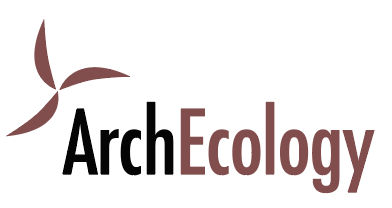Building Optimization: EMPs
How Energy Management Plans Streamline Optimization, Reporting, and Compliance
Building optimization is the process of improving the energy efficiency, sustainability, and overall performance of buildings through various strategies such as upgrading building systems, utilizing renewable energy sources, improving insulation, and implementing smart building technologies. By improving building performance, owners and developers can reduce energy costs, enhance occupant comfort and health, increase property value, and effectively meet sustainability goals and requirements.
In 2019 Washington State passed the Clean Buildings bill and expanded it in 2022. The Clean Buildings Performance Standard adopts ASHRAE Standard 100 with amendments and essentially requires adopting best practices for building management to continuously improve and maintain energy efficient operational performance. At its core, this requires building owners to have a documented and well executed operations and maintenance plan as part of a comprehensive annual energy management plan. For Tier I buildings (included in the original legislation), commercial buildings with over 50,000 sf of conditioned floor area, there is also a requirement to meet an energy performance target. For Tier II buildings, 20,000 sf and larger, including multi-family, there won’t be a performance target in the first round.
Today, building owners and managers are facing new and increasing imperatives for building performance and Environment, Social, and Governance (ESG) Reporting. The State of Washington, City of Seattle, and many institutional investor/owner groups expect continuous improvement, certifications, and compliance reporting. The best approach is to dovetail these efforts as much as possible. We provide support to teams getting started and maintaining momentum to reach their goals.
The Energy Management Plans, including building Operations and Maintenance (O&M), provide a useful program implementation framework for building owners and managers to address performance improvements whether or not they need to comply with the WA state CBPS. They create a structured format for gathering, maintaining, and sharing all the information that is needed to manage buildings for high performance.
A comprehensive Energy Management Plan (EMP) addresses benchmarking, audits and assessments, capital management, and much more. One of the biggest benefits is that it brings together all the relevant information for managing building performance in one place.
Benchmarking using ENERGY STAR Portfolio Manager provides ongoing energy performance tracking, calculates the target EUI (EUIt) for the building based on property uses and operating hours, and tracks factors such as number of occupants, production rates, and energy-using equipment that would impact the measured EUI. Portfolio Manager can exchange data with local utilities and other platforms used for ESG report and certification such as Measurabl and Arc Skoru (LEED O+M). Once it is set up, agencies like Seattle or Washington can simply download data when reporting is due.
Your EMP will capture any energy efficiency and energy conservation measures (EEMs and ECMs) identified by staff or through an audit or assessment. Annual EMP updates will track all energy improvement projects implemented, including O&M program updates for the implemented measures, commissioning at install and ongoing, and staff training plans.
Other EMP elements specified in the standard include:
developing best practices materials on the benefits of energy efficiency and specific instructions on how to operate windows, HVAC controls, and lighting components and controls to keep building occupants informed and engaged;
an occupant satisfaction survey a lighting systems schedule and calculating LPD (lighting power density). the capital management section with an asset replacement plan to ensure equipment is replaced with efficient/ENERGY STAR certified (where applicable) equipment.
A major aspect of the standard is the O&M program plan (per Section 6 of the Standard), including an implementation plan to ensure documentation is prepared for effective record keeping and compliance reporting. O&M training for staff and contractors is essential to ensure understanding of how to manage systems to meet IEQ energy efficiently.
Optimizing our buildings reduces greenhouse gas emissions and mitigates climate change impacts. With Seattle's commitment to sustainable development, building optimization can help developers meet local regulations and attract environmentally conscious tenants or buyers.
Optimization requires a team approach. Owners, building operators and managers, contractors and consultants — and of course occupants — all have a role to play. Read Part 2 in our series on building optimization to dig into roles and responsibilities, and sign up for our newsletter for more great information on building science and sustainability.
ArchEcology is pleased to provide services to support compliance with the WA Clean Building Performance Standard (CBPS), City of Seattle Benchmarking, Building Tune-ups, and upcoming Building Performance. Check out our EMP Tool Kit.

